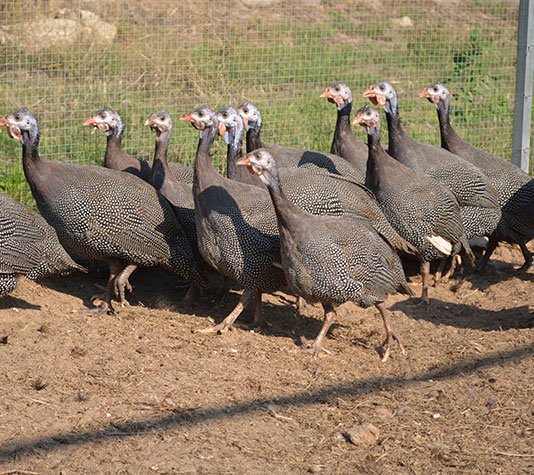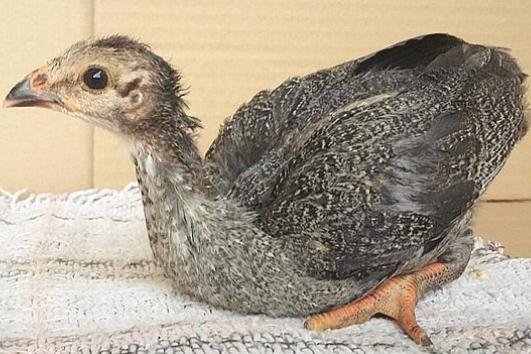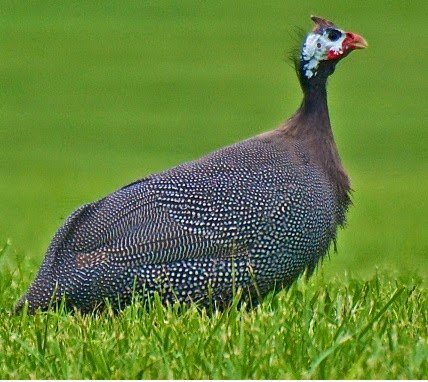Guinea Poultry- Care and breeding
KNOWING THE BIRDSTHE BIRDS OF GUINEA
They are in different colors that guinea fowl appears, but dark gray with white spots, the pedrez variety is undoubtedly the imagination of the people. In photos, drawings, paintings, and objects that refer to the species, such as the egg-carriers in the format of the bird that decorate many kitchens, most of the time the feathers have that combination of tones, making it the best known.

The hen de guinea, the hen, the hen, the crocodile and the coquim, also the hen-deangela still has specimens in the gray, light gray, white and pampa versions, which is the result of crossing the pedrez with the white. It originates in the sub-Saharan region of Africa, and here came the epoch of colonization, brought by the Portuguese.


The trade of matrices, offspring or ornamental birds is another option for the producer, who must remember that the existence of a buyer market close to the facilities of the establishment is one of the conditions to ensure the return of the investment.

Being tough and rustic, the hen-deangola rarely gets sick, making it even easier to create, which is low cost, with fast and productive fattening and nests of up to 60 eggs. It is an ideal animal to live in places, haciendas and patios of residences, wherein a small space chicken coop can be assembled by the creator and with existing materials on the premises, such as pieces of wood, nails and wire screens.


Without requiring very elaborate food and, therefore, high price, the handling of the bird is cheap. The chicken-deangola is also considered important in the biological control of the environment. The consumption of insects, locusts, grassland cigarettes, cattle manure caterpillars, ants, termites and ticks.

Because she is unruly, she can help in the custody of the property. The hen-d'angola cackles immediately the presence of strangers or any abnormality is perceived nearby. And since it flies and runs with speed, it has the ability to escape from any threat or attack by predators.
Since in captivity the reproduction is less than when it lives loose, it is better to give preference to selected birds and with better physical conditions. In addition, the advice is to keep both sexes always together in the chicken coop, to increase the fertility margin of the eggs. The chin longer and the crest more pronounced forward, like a horn, are two characteristics of the male that differentiate it from the female, which has everything in smaller size.

Let's do it
HOME Learn the bird of origin before buying the headquarters of a nursery with references. If you buy more than one variety, create the specimens in different areas, so they do not cross. Of medium size, an adult neck hen weighs between 4 and 6 kilos and measures from 35 centimeters (females) to 40 centimeters (male).
ENVIRONMENT How noisy bird and he likes to live in groups, better keep it in places where there are other creations that prefer silence. With good adaptation to any climate, the campus can be installed in all regions of the country. For more effective control, give preference to the intensive system, preventing birds from dispersing and depositing eggs in hard to reach places.
POWER includes insects from grains and vegetables. Rations for the birds also feed the hens-deangola. In the first months of life, provide a special ration to accelerate growth and, after six months, introduce a balanced combination of ration with grains and vegetables. Serve meals three times a day in clean feeders, so as not to mix with leftovers that may have been fermented.Source Source Source
Posted from my blog with SteemPress : http://litzney.vornix.blog/2018/08/11/guinea-poultry-care-and-breeding/


This is truly useful to us @farms. Indeed we @farms find this post informative and educative, thanks for sharing
Resteem
(to be a part of this community; ensure to always use #farms and #steemchurch for agricultural related post)
THEME WEEK
Wednesday: Geese as a farm bird
Thursday: Rearing Turkeys
Friday: Chicken in poultries.
Saturday: Guinea fowl
Sunday: Ducks
Monday: Pheasant